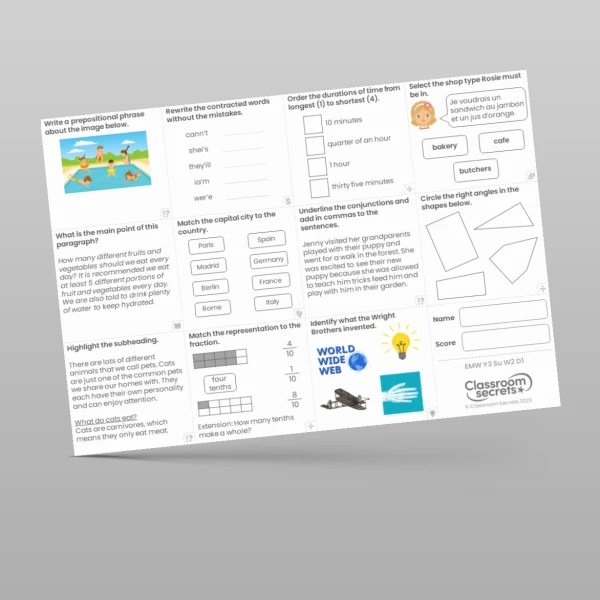

Do your class know their article from their conjunction, or their adjective from their adverb? Then they'll surely be ready to face this Key Stage 2 Labelling Parts of a Sentence Test Practice resource! This pack includes four different levelled tests that can be used throughout Key Stage 2. Each level of challenge has three tests, with a total of six questions, for children to apply their knowledge to. No need to work out the answers yourself as there's an answer sheet for each one too.
Use this resource as part of your ongoing assessment throughout the year. You could give children all three of the same tests in one go and have them attempt the questions multiple times throughout the year to show progress. Alternatively, you can offer a differentiated approach and only complete one test per term; the choice is yours!
Differentiation:
Beginner Labelling the verb, noun and adjective in sentences. Aimed at Year 2 Developing.
Easy Labelling the verb, noun, adjective and adverb in sentences. Aimed at Year 2 Secure/Year 3 Emerging.
Tricky Labelling the verb, noun, adjective and conjunction in sentences. Aimed at Year 2 Mastery/Year 3 Developing.
Expert Labelling the verb, noun, adjective, conjunction and article in sentences. Aimed at Year 3 Secure/Year 4 Emerging.
Curriculum Objectives
- Learn how to use: Expanded noun phrases to describe and specify [for example, the blue butterfly] / Expanded noun phrases for description and specification [for example, the blue butterfly, plain flour, the man in the moon] / Terminology for pupils: noun phrase
- Use of –ly in Standard English to turn adjectives into adverbs / Terminology for pupils: adverb
- Terminology for pupils: noun
- Terminology for pupils: adjective
- Terminology for pupils: verb
- Develop their understanding of the concepts set out in English appendix 2 by: Using conjunctions to express time and cause / Express time, place and cause using conjunctions [for example, when, before, after, while, so, because] / Terminology for pupils: conjunction
- Use the forms a or an according to whether the next word begins with a consonant or a vowel [for example, a rock, an open box] / Terminology for pupils: consonant / Terminology for pupils: consonant letter / Terminology for pupils: vowel / Terminology for pupils: vowel letter
Tags
Word Classes
Test Practice
2G3.2
2G1.6
2G1.1
2G1.3
2G1.2
3G1.4
3G1.8
Year 3 Test Practice
Year 4 Test Practice
Year 5 Test Practice
Year 6 Test Practice
Year 6 SATs Preparation











